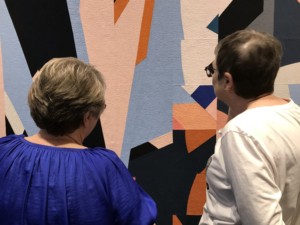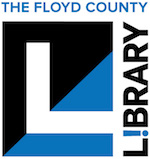Quilting has come a long way from its origin culcita, Latin for “a stuffed sack.” In early American colonization, the use of fabric was strictly functional and efficient – the female heads-of-houses stitched a variety of materials due to money problems or limited textile options. Fabrics became more accessible and feasible during the late 1700S and into the early 1800s, breeding quilting as an art form.
Still, the word “quilt” does not do the artists in the Form, Not Function exhibition justice; the attention to detail, the secret and not-so-secret messages woven into the minds of the viewers, the multitude of stitching technique, therapeutic way to express inner thoughts…all culminated from years and years of tradition.
The Carnegie just wrapped its 15th year of the Form, Not Function exhibition, which has become one of the primary destinations in the country for viewing contemporary quilts. “It’s a very good show, and it’s an easy drive,” said Carole Mitchell. She’s been driving down to the exhibition from Indianapolis for about the last 8 years. “My grandmothers quilted, my mother quilted, and so I quilt.”
Tradition led Carole into a budding new friendship with another Carnegie visitor, Sunnye Sherman of Louisville, who stumbled upon the exhibition. Both women found the exhibition accidentally. Or maybe it was fate steeped in tradition.

Sunnye Sherman (left) & Carole Mitchell
Both had been to the show two or three years prior to meeting each other. “We met at the Form, Not Function show five years ago,” Carole concluded. “We just started chatting and decided to meet up for lunch.”
“We talked like old pals,” added Sunnye. “Our belief system is the same.”

Carole & Sunnye discussing “Papa’s Purses” by Pat Budge
The annual Form, Not Function exhibition has been their meet up spot ever since the first blossoms of friendship. What do you know, another tradition.
Brigid Morrissey, Publicity Coordinator for the Carnegie Center for Art & History


What a fun story! Thanks for sharing it.
Thank you for sharing “our” (Sunnye’s and my) story!